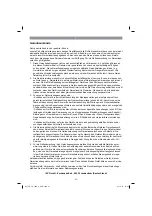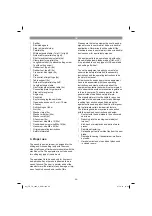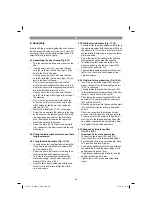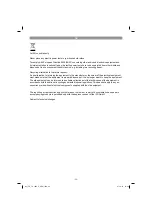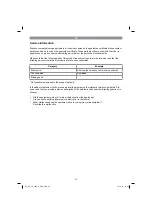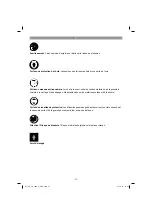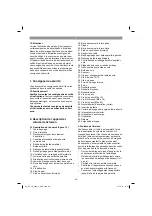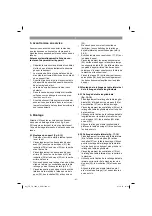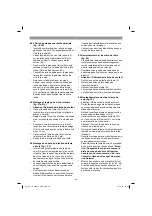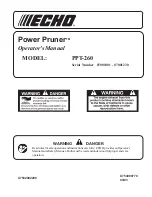
GB
- 29 -
6.4 Fitting the saw blade guard (Fig. 1, 22)
•
Fit the saw blade guard (4) in the oval hole
(y) in the splitter. Fasten the saw blade guard
using the screw (x) and tighten the screw only
enough to allow the saw blade guard to move
still.
•
The saw blade guard must always be lowered
over the workpiece before you begin to cut.
•
To connect the suction hose of an extraction
system, the cover (3) on the saw blade guard
can be removed (suction hose/extraction sys-
tem not included).
•
The machine is not allowed to be used wit-
hout the saw blade guard.
6.5 Replacing the table insert (Fig. 23)
•
The table insert has to be opened if you need
to replace it if it gets damaged and whenever
you change the blade or set the splitter.
•
To prevent increased likelihood of injury, you
should replace the table insert whenever it is
worn or damaged.
•
Important. Pull out the power plug.
•
Remove the saw blade guard (4).
•
Remove the countersunk head screws on the
table insert.
•
Take out the table insert (43).
•
Fit the replacement table insert by following
the above in reverse.
6.6 Fitting/replacing the blade (Fig. 24)
•
Important. Pull out the power plug.
•
Always wear gloves when handling saw bla-
des. Risk of injury!
•
Remove the table insert by undoing the two
countersunk head screws (see 6.5).
•
Undo the nut with the one wrench (30) on the
nut itself and an open-ended wrench (31) on
the motor shaft to apply counter-pressure.
•
Important. Turn the nut in the direction of rota-
tion of the saw blade.
•
Take off the outer flange and pull the old saw
blade off the inner flange by dropping the bla-
de at an angle.
•
Clean the blade flange thoroughly before fit-
ting the new blade.
•
Mount and fasten the new saw blade in re-
verse order.
Important. Note the running
direction. The cutting angle of the teeth
must point in running direction, i.e. for-
wards (see the arrow on the blade guard).
•
Refit and set the splitter (2) and the saw blade
guard (4) (see 6.3., 6.4.)
•
Check to make sure that all safety devices
are properly mounted and in good working
condition before you begin working with the
saw again.
7. Operation
7.1. ON/OFF switch and overload switch
(Fig. 7)
•
To turn the saw on, press the green button
„I“. Wait for the blade to reach its maximum
speed of rotation before commencing with
the cut.
•
To turn the equipment off again, press the red
button „0“.
The motor of this equipment is protected against
overload by an overload switch (46). If the rated
current is exceeded, the overload switch (46) will
shut down the equipment.
•
Let the equipment cool down for several mi-
nutes.
•
Press the overload switch.
•
Press the green button „I“ to switch on the
equipment.
7.2. Cutting depth (Fig. 7)
Turn the hand crank (13) to set the blade (5) to
the required cutting depth.
Turn anti-clockwise:
larger cutting depth
Turn clockwise:
smaller cutting depth
7.3. Parallel stop
7.3.1. Stop height (Fig. 25, 26)
•
The parallel stop (7) supplied with the bench-
type circular saw has two different guide
faces.
•
For thick material you must use the stop rail
(6) as shown in Fig. 25, for thin material you
must use the stop rail as shown in Fig. 26.
•
To change over the stop rail (6) you have to
slacken the two knurled screws (w) in order to
disconnect the stop rail (6) from the parallel
stop (7).
•
Depending on the required cutting height, the
stop rail can be slid into two different grooves
on the parallel stop and secured with the
knurled screws.
•
The stop rail can be taken off and fastened to
either the right or left parallel stop depending
Anl_TE_TS_1825_U_SPK7.indb 29
Anl_TE_TS_1825_U_SPK7.indb 29
07.12.15 14:32
07.12.15 14:32







